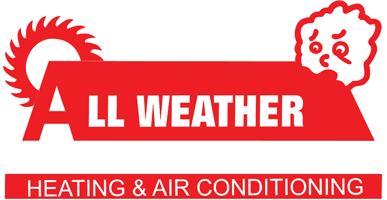
If you’re needing air conditioner installation in Huntsville, you should also be investigating your new air conditioner’s SEER rating.
SEER means Seasonal Energy Efficiency Rating. Simply put, it looks at how capable your air conditioner is at turning electricity into chilled air. A greater number signifies your air conditioner is more efficient, which is good for your energy expenses.
However, there are lots of different solutions to choose from for air conditioners. And a better SEER rating usually is accompanied by a bigger price. So, how can you find out which one is best for your home?
At All Weather Heating & Air Conditioning Inc, we give you a free, no-pressure home comfort analysis. You can get one by contacting us at 256-801-4701. Our knowledgeable air conditioner installers will collaborate with you to help you find the right air conditioner for your family. Plus, they’ll also offer you a free, no-obligation estimate.
For the time being, let’s go over SEER ratings and how they can impact your home’s comfort. And your energy bills.
Why Do the SEER Ratings Even Matter?
In 2016, the federal government developed new SEER guidelines. New air conditioners are mandated at minimum 13 SEER in the northern United States and 14 SEER in the southeast and southwest. If you’re unsure when you had your air conditioner replaced or what its SEER ranking is, you can find the sticker on the system outside your home. If you can’t locate the sticker, you can get in touch with us at 256-801-4701 for assistance.
If your air conditioner was put in in advance of that year, it’s likely much less efficient. Air conditioner technology has rapidly changed in the past couple of years, with major breakthroughs in energy efficiency and smart home capacity. Using your new air conditioner with a smart thermostat could help you conserve more on AC costs, since the thermostat can intuitively manage your temperature settings when you’re gone.
If your existing air conditioner has a SEER rating between 8 and 10, adding a 14-SEER system could save you close to 30–50% on annual utility bills. Your savings depend on your air conditioner size and your thermostat settings.
Is the Higher the SEER the Better?
An air conditioner with a better SEER rating will be more efficient at converting electricity for cooling. The best efficient ones, which can go as high as 26 SEER, have ENERGY STAR® certification. This certification means the air conditioner matches EPA rules for energy savings and environmental conservation.
While ENERGY STAR air conditioners are typically more expensive, you’ll usually get the difference returned over the years through cheaper cooling bills. These air conditioners, which are generally rated 16 SEER and greater, consume about 8% less electricity than other new units, according to ENERGY STAR.
One of the biggest differences between a 14 SEER and 16 SEER is variable-speed capability. A variable-speed air conditioner can run at varying speeds. This improves comfort for your family while keeping your utility bills reduced. It can also keep temperatures and humidity more even, since it can run for longer without requiring a lot more electricity.
When getting a variable-speed air conditioner, you’ll have to check that your furnace or air handler is compatible. This is because your air conditioner relies on this unit’s blower to send chilled air around your home. Furnaces only work for approximately 20 years, so if yours is getting old, we advise getting furnace installation at the same time so you can get all the benefits of your variable-speed air conditioner.
When you’re set to replace your air conditioner, the cooling specialists at All Weather Heating & Air Conditioning Inc are here to assist you. Call us at 256-801-4701 to request your free home comfort analysis now.
